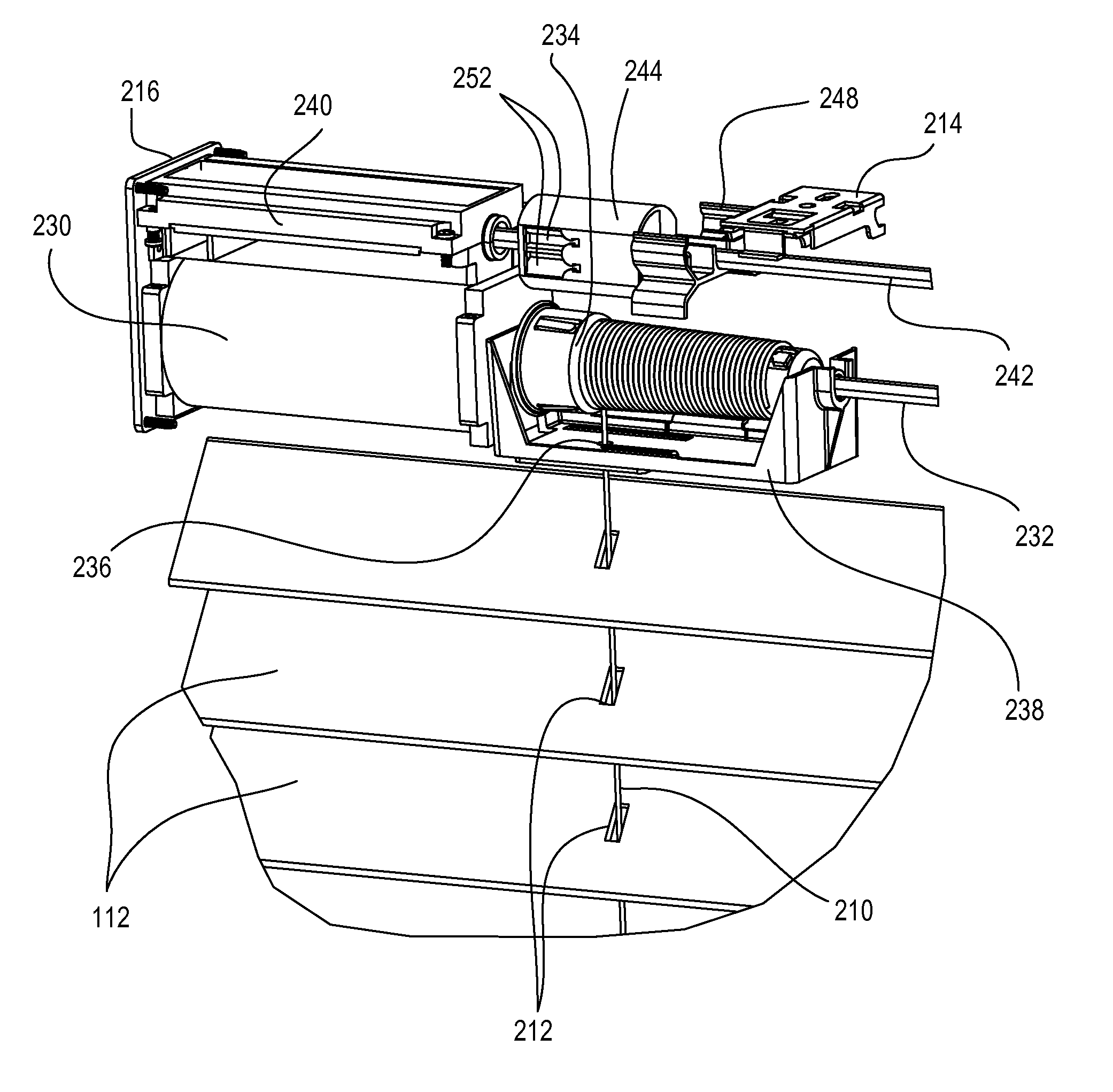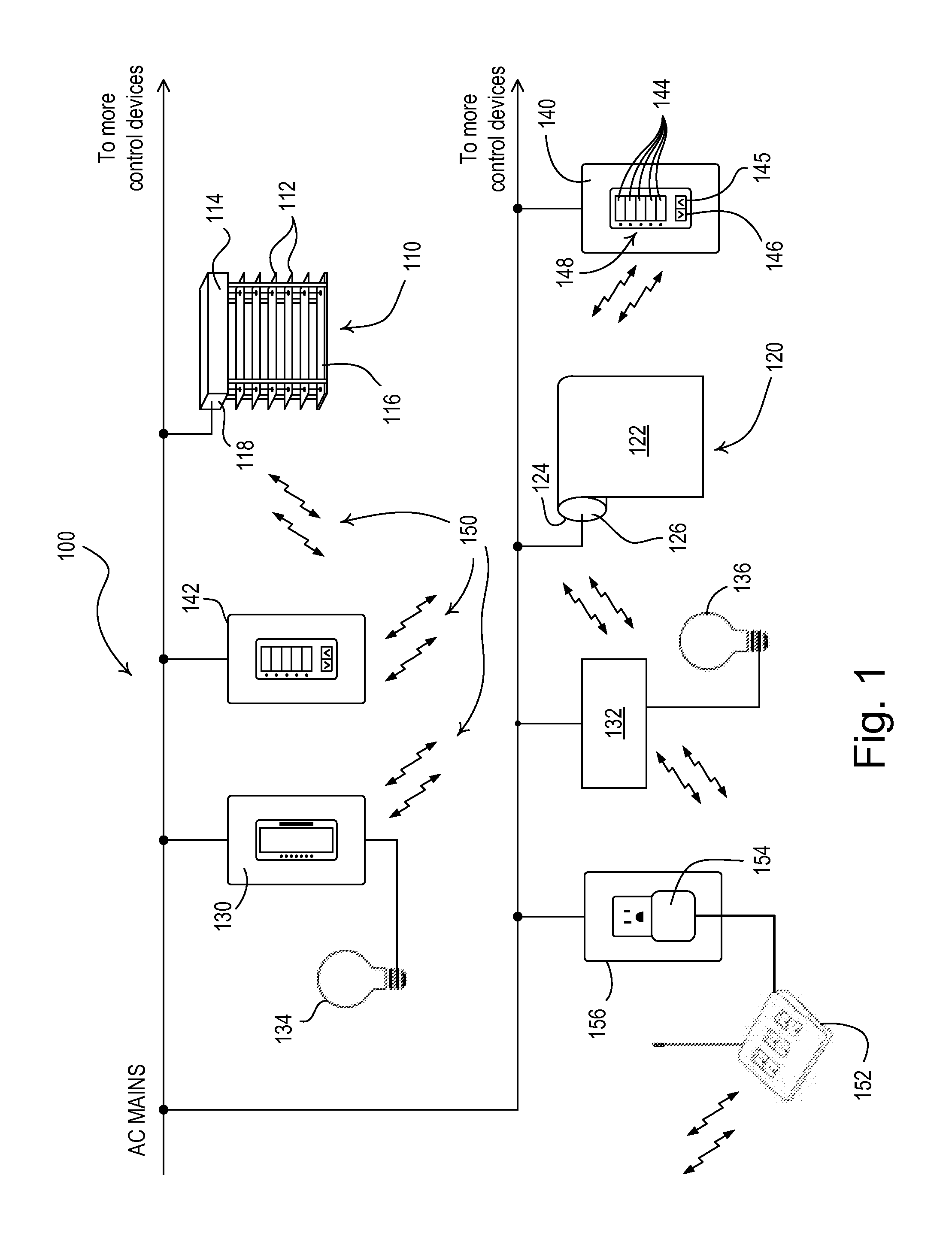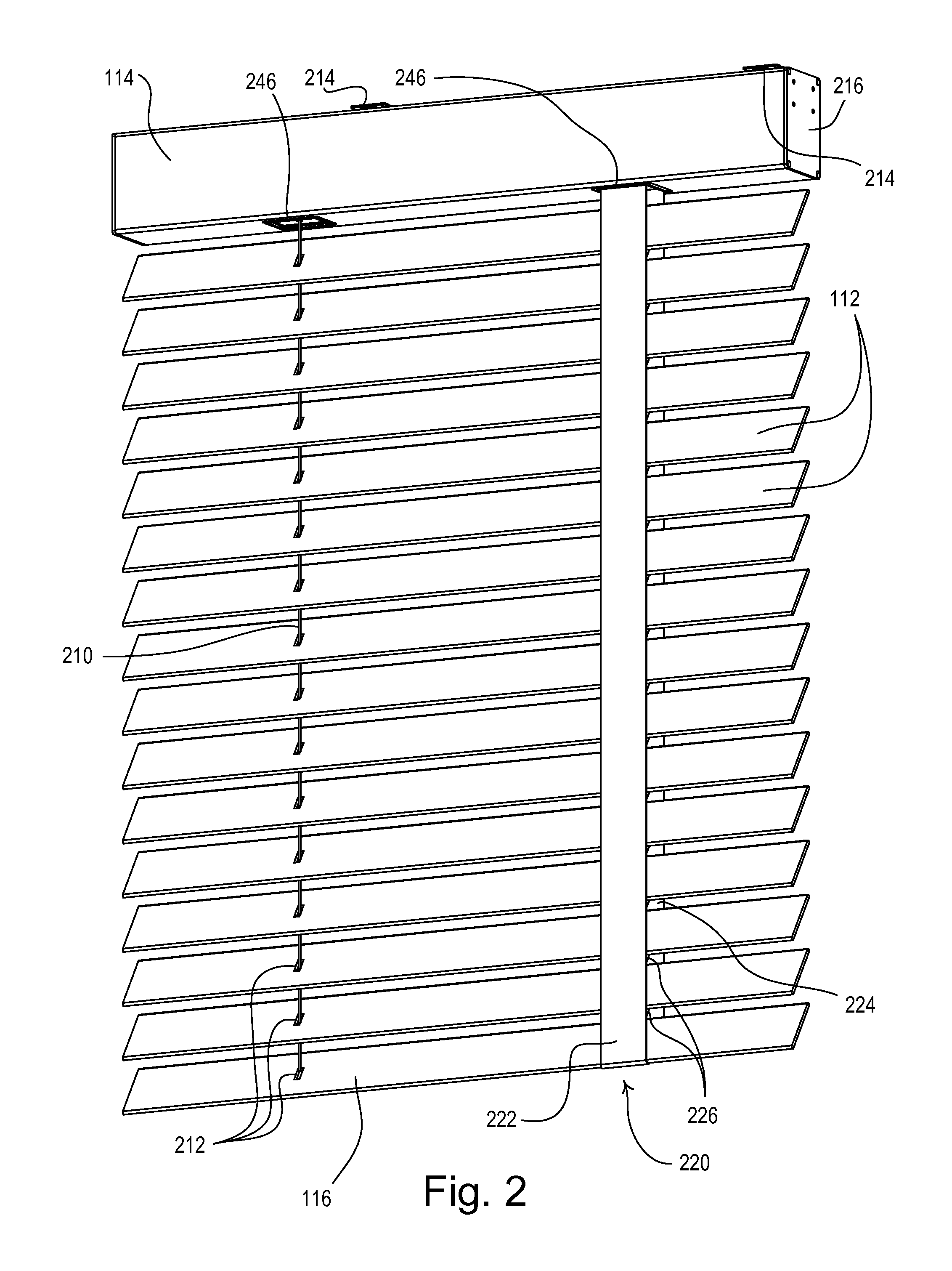Motorized Venetian Blind System
a motorized venetian blind and blind system technology, applied in the field of window treatments, to achieve the effect of minimizing occupant distractions
- Summary
- Abstract
- Description
- Claims
- Application Information
AI Technical Summary
Benefits of technology
Problems solved by technology
Method used
Image
Examples
first embodiment
[0036]FIG. 1 is a simplified block diagram of a wireless load control system 100 having a motorized venetian blind system 110 according to the present invention. The blind system 110 comprises a plurality of flat slats 112 displaced between a head rail 114 and a bottom rail 116, and may be mounted in front of a window. The blind system 110 also comprises a blind drive unit 118 located in the head rail 114 for raising and lowering the bottom rail 116, and tilting the slats 112 to control the amount of daylight entering a space as will be described in greater detail below. According to the present invention, the blind drive unit 118 is operable to independently control a position PBLIND of the bottom rail 116 and a tilt angle θBLIND of the slats 112, so as to control the amount of daylight entering the space in which the blind system 110 is installed. The blind drive unit 118 is operable to receive power from a source of AC power (e.g., an AC mains voltage, such as 120 VAC @ 60 Hz). A...
second embodiment
[0066]FIG. 15 is a simplified block diagram of a load control system 600 having multiple venetian blind systems 610 the present invention. The control devices of the load control system 600 are operable to communication with each other via wired communication links as will be described below. The load control system 600 is operable to control the level of illumination in a space by controlling the intensity level of the electrical lights in the space and the daylight entering the space. Specifically, the load control system 600 is operable to control the amount of power delivered to (and thus the intensity of) a plurality of lighting loads, e.g., a plurality of fluorescent lamps 620, and to control the positions PBLIND of the bottom rails 116 and the tilt angles θBLIND of the slats 112 of the motorized blind systems 610, as well as fabric positions of motorized roller shades 630, to thus control the amount of sunlight entering the space. The load control system 600 could comprise o...
PUM
 Login to View More
Login to View More Abstract
Description
Claims
Application Information
 Login to View More
Login to View More - R&D
- Intellectual Property
- Life Sciences
- Materials
- Tech Scout
- Unparalleled Data Quality
- Higher Quality Content
- 60% Fewer Hallucinations
Browse by: Latest US Patents, China's latest patents, Technical Efficacy Thesaurus, Application Domain, Technology Topic, Popular Technical Reports.
© 2025 PatSnap. All rights reserved.Legal|Privacy policy|Modern Slavery Act Transparency Statement|Sitemap|About US| Contact US: help@patsnap.com



